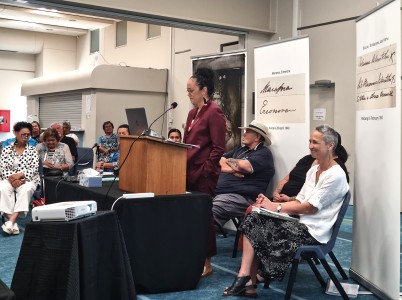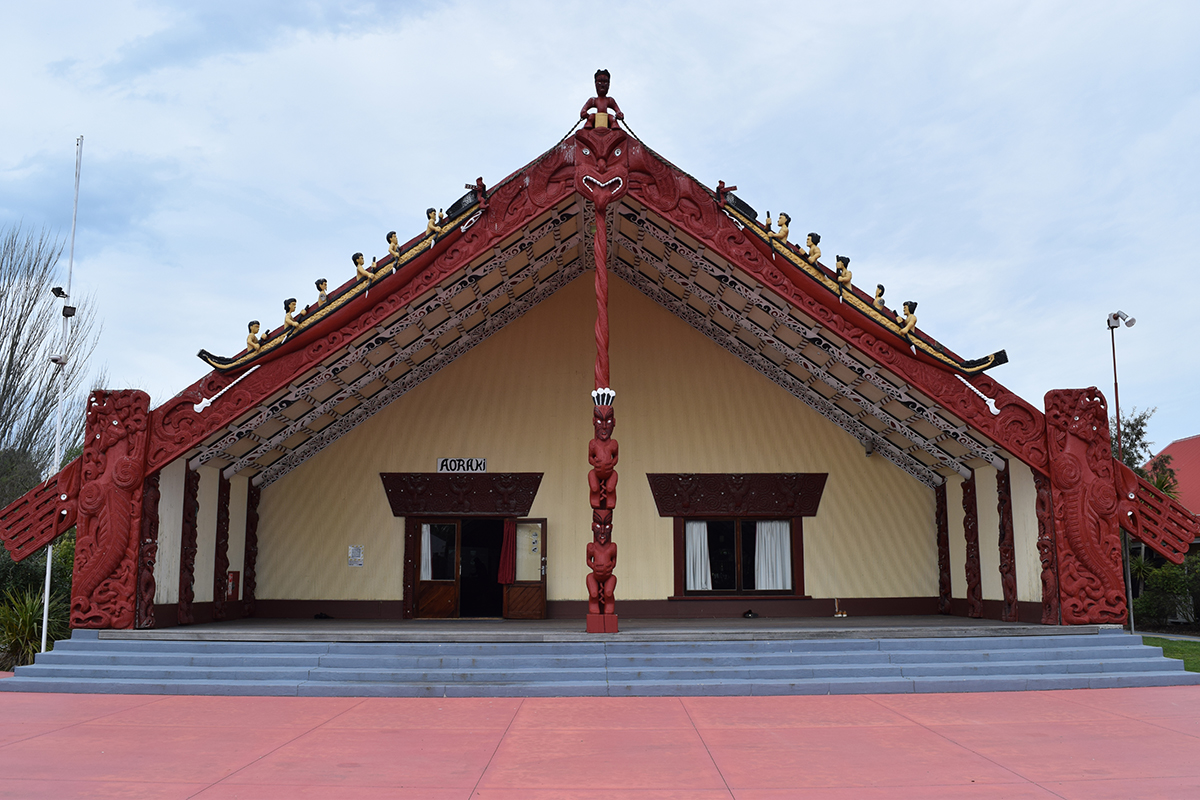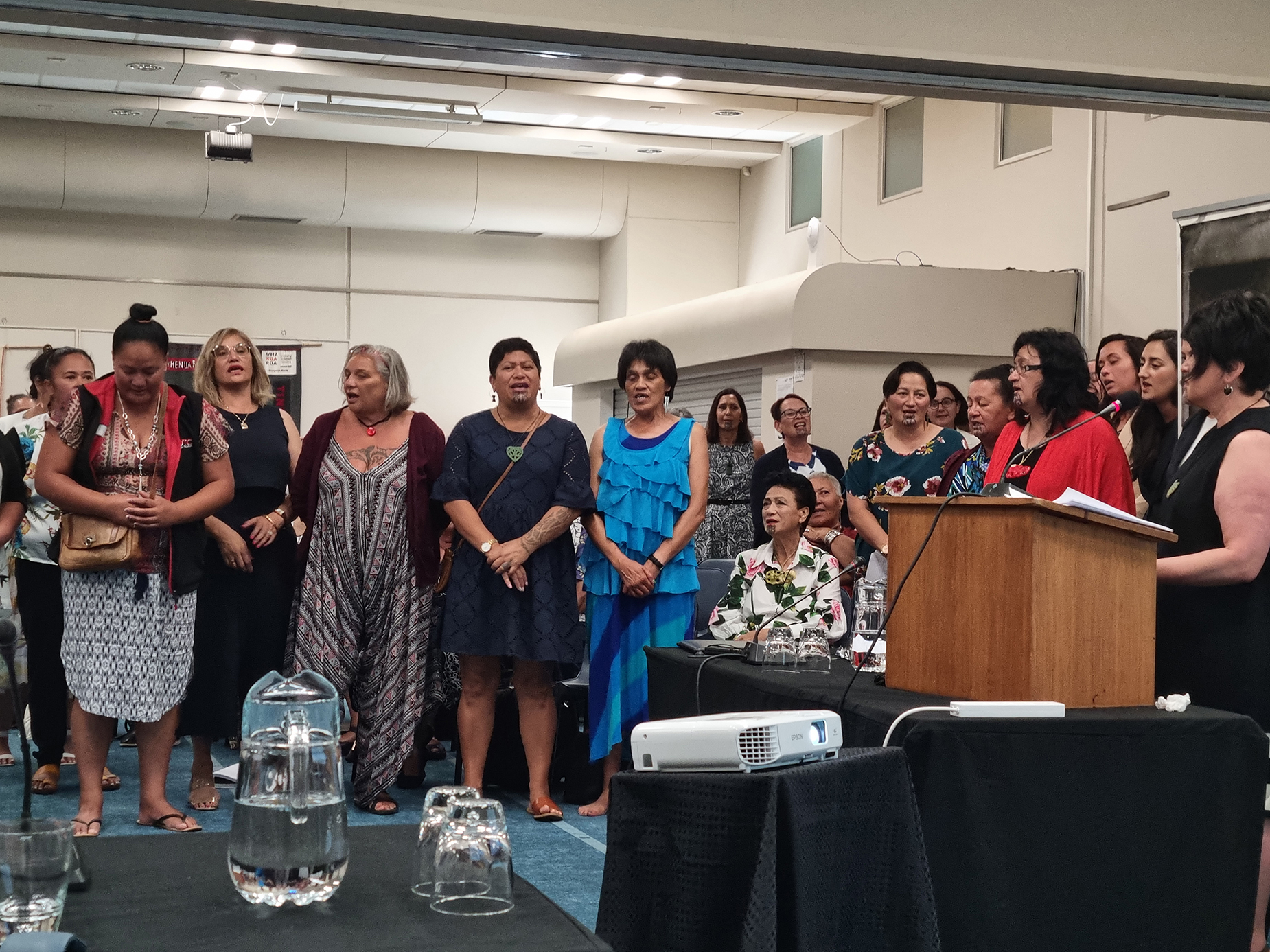How did mātauranga and tikanga promote balance between wāhine and tāne?
Ka pēhea te mātauranga me te tikanga ka whakakitea te ōrite o te tāne me teūpāpae i te Kaupapa Māori?
Many witnesses explained how mātauranga and tikanga promote balance between wāhine and tāne. A crucial source of mātauranga and tikanga is the atua, with witnesses saying Papatūānuku and Ranginui exemplified balance between te ira wāhine and te ira tāne. Wāhine and tāne mirrored the roles of these atua through whakapapa, as both were required to create ‘te ira tangata’ (humanity) and raise the next generation. Tikanga reinforced balance between wāhine and tāne by requiring both tāne and wāhine to complete everyday tasks in a spiritually and culturally safe way. Witnesses also said the balanced, non-hierarchical relationship between tāne and wāhine in traditional Māori society was demonstrated in te reo Māori’s use of gender-neutral terms (for example, the pronoun ‘ia’). They said this fosters an understanding of equality within te ao Māori.

Te Ringahuia Hata giving evidence at Turner Centre, Kerikeri
What witnesses said
- “Every part of tikanga and mātauranga Māori was based on the equality and interdependence of Māori women and men.” (Dr Moana Jackson, doc A85, p 6)(external link)
- “Wāhine and tāne were thought of as important parts of the whakapapa, without one the other could not survive. In tikanga wahine played an important role in helping link the past present and future. Throughout time Māori history tell us wahine held important roles in society. Mātauranga Māori educates us that everything is descended from a balance of Papatuanuku and Ranginui.” (Merepeka Raukawa-Tait, doc A95, p 4)(external link)
- “Māori were a collective-based society, and tāne and wāhine each had important roles that contributed and were essential to the collective. Whakapapa is central to Māori identity and our tipuna respected that both tāne and wāhine linked Māori back to the creation of Papatūānuku.” (Whirimako Black, doc A84, p 5)(external link)
- “In Māori terms, any notion of a gendered hierarchy implying the lesser status of Māori women would have been, and still is, intellectually incomprehensible and culturally impossible. The relational nature of whakapapa, and its centrality in the Māori intellectual tradition, ensured that any differences in the roles men and women may have performed were a recognition of distinctive mutuality rather than oppositional worthiness.” (Moana Jackson, doc A85, pp 6-7)(external link)
- “Traditional Māori society was underpinned by a cosmology that emphasised and reinforced the dialectical parallelism of female-male complementarity, as personified by Papatūānuku – the earth mother, and Ranginuiatane – the sky father. The relationship between spiritual entities can be seen as important because they elaborate on the relationships which existed in human society. The complementarity of Papatūānuku and Ranginuiatane was exemplified in daily practice by the unique leadership roles which women fulfilled in traditional Māori society.” (Ella Henry, doc A63, pp 5-6)(external link)
- “Wāhine, like so many parts of Te Ao, are essentially connected to the whole, and it is difficult to consider mana wāhine on its own, in the absence of the wider context of whānau, and the societal roles within the tribes. Haere takirua is the cultural imperative that both wāhine and tāne move as one.” (Huhana Lyndon and Nicki Wakefield, doc A59, p 1)(external link)
- “It is about the balancing of the mana of the wāhine, and the mana of the tāne. Without the balance of wāhine and tāne, you shall not reproduce. That is the ira seed, and the ira wāhine seed … That is how the balance came to be, from the separation of Rangi and Papa. It is also where our tikanga comes from, Papatūānuku.” (Paihere Clarke, doc A141, p 3)(external link)
- “Balance of tane and wāhine leadership existed during the pre-1840 time period. The woman’s role was significant in ensuring the continuation of generations, where they were the whare tangata, the producers of the next generation. [Wāhine] also held a wealth of te ao Māori knowledge. The spiritual wealth or wairua that was knowledge acquired from female deities, the physical wellbeing of a woman when procreating surrounded by the practice associated with tapu and noa and surviving in the challenges of the environment. This is also my understanding of the balance between tane and wāhine.” (Violet Walker, doc A66, p 8)(external link)
- “My understanding is that the union of ira wahine and ira tāne creates te ira tangata.” (Patricia Tauroa, doc A60, p 9)(external link)
- “Te ira wāhine and te ira tankata were not separate. We need male and female together. You do not need male to be above female. We do not need a female to be above male. When you go to a whare you need one voice for the female, and you need one voice for the male. Otherwise, the whare / house cannot speak. Otherwise, you are not being welcomed by that house. When you do not have both, it shows that the house does not stand. It is about tikanka. When you do not follow your tikanka, things start to slip.” (Ema Roriana Weepu, doc A136, pp 18-19)(external link)
- “Māori women and their men lived lives influenced by mātauranga Māori. We were in balance with each other and with our environment. We were connected.” (Hinemoa Ranginui-Mansell, doc A129, p 8)(external link)
- “One of the biggest reasons I believe that pre-1840 wāhine were considered equal to men, in comparison to te ao Pakeha (where they are not) is through te reo Māori. Personal pronouns and personal possessive pronouns are both gender neutral (ia / tonal tana). This means that you can refer to a group of people with the same word regardless of gender. What this illustrates is that men and women are seen as equals.” (Merepeka Raukawa-Tait, doc A95, p 3)(external link)
- “Māori customary lore regards both men and women as part of the collective whole, both formed part of the whakapapa that linked Māori people back to the beginning of the world, and women in particular played a key role in linking the past with the present and the future.” (Tina Latimer, doc A13, p 3)(external link)
- “He kaipupuri te wahine i ngā mātauranga me ngā kōrero a o tātou tūpuna, he kaipupuri i te mana o ngā hapu me ngā iwi, he whakahaumaru he tiaki i te hapū katoa, ngā tāngata me ngā tamariki katoa. Ka mahara ake ki ngā kōrero o taku whānaunga a Te Huranga Hohaia, ‘He wahine he whenua e ngaro ai te tangata ki te po ... For women and land do men go down to the night.’ He mahi rangatira tō ia wahine i tōku hapū e ora pai ai te hapū whānui, e taea hoki ai e te tāne te mahi i āna mahi. I tino hirahira ngā mahi a o mātou tūpuna whaea i aua wā mō ngā mahi Māori me ngā mahi a ngā tūpuna, te tiaki tūpapaku, te tiaki whānau tūroro, te tiaki tamariki, te karanga, he nui te mana o ērā mahi katoa. Engari ko te mea nui ki a mātou, ka haere ngātahi te tāne me te wāhine, te ira tāne me te ira wāhine, ki roto i te whakaaro me te whakapono Māori.” (Nora Rameka, doc A152, p [9])(external link)
- “Women are the keepers of acknowledge and traditions of our tupuna, they hold mana within their hapu and iwi, they protect and keep safe our hapu and people. I recall the words of my late whanaunga Te Huranga Hohaia who said ‘He wahine he whenua e ngaro ai te tangata ki te po ... For women and land do men go down to the night.’ Women have distinct and important roles within our hapu for our survival and growth and in order also for our men to fulfil their roles and responsibilities. The roles and work of our tupuna whaea were critical in traditional times including the caring of tupapaku, caring for our sick, caring for our children, undertaking responsibilities of karanga, there is mana in each of those roles. An important aspect in our beliefs and practices is that the role of women and men go hand in hand, the essence of men and women, they work together.” (Nora Rameka, doc A152(a), p [9])(external link)

